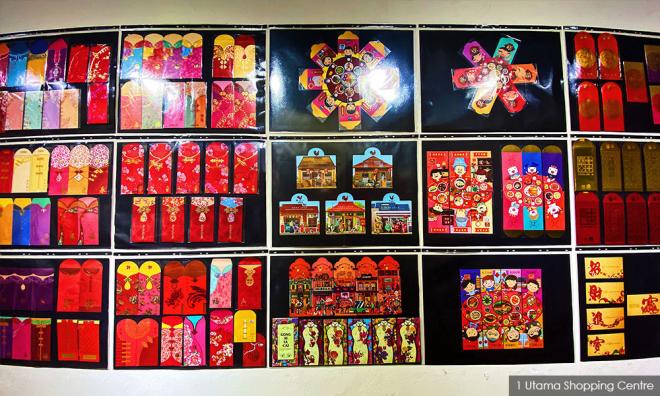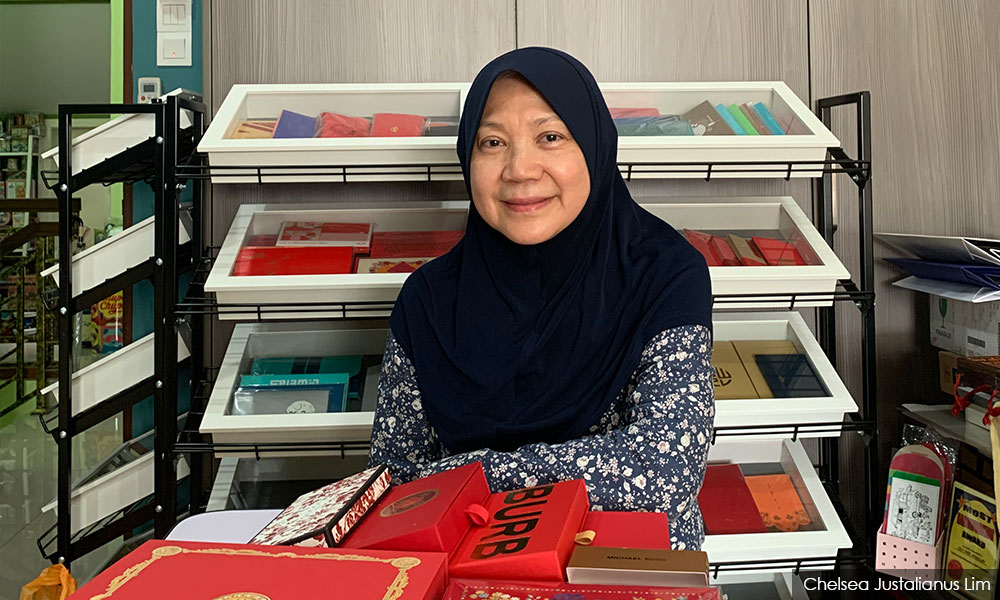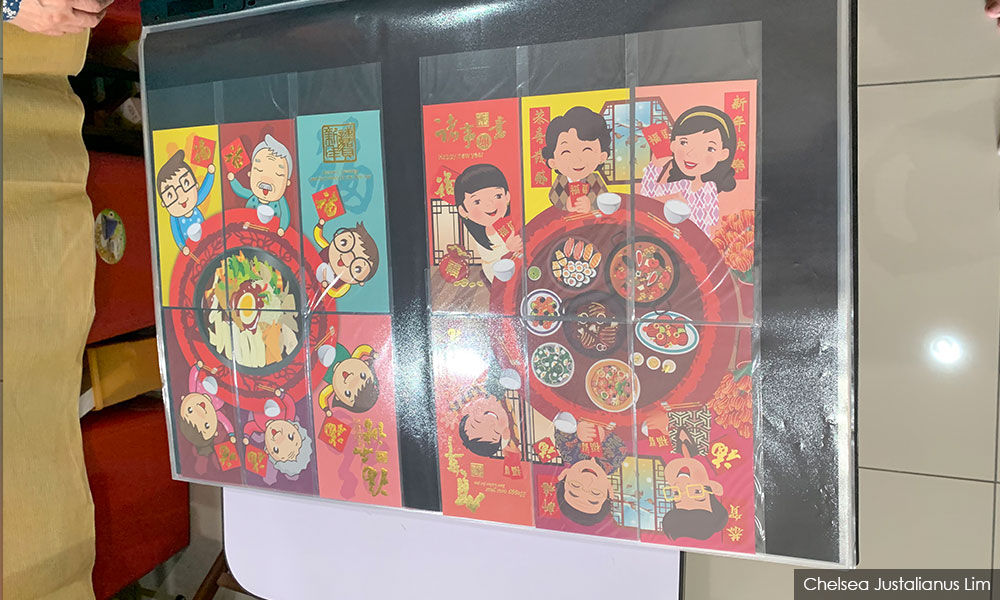
For many, ang pows are merely envelopes containing monetary gifts for children to mark Chinese New Year but for collector Lily Chee Abdullah, the red packets are treasures themselves.
Chee, whose ang pow collection is so extensive she has lost count, started collecting six years ago.
It all began when she helped her sister source some ang pow for the latter's collection.
This made her take a closer look at the items usually discarded by recipients, to find their hidden and often overlooked value.
“Somehow, I find it so fascinating,” she said when met at her home in Kelana Jaya, Selangor.

The more she paid attention to the envelopes, Chee (photo) said, the more she realised that the illustrations on the ang pows carry important meanings.
“They actually teach family values. Some will have pictures of reunion dinners or travelling home, as well as meeting with your families,” she said.
Vintage ang pows in high demand
Entering into the room where she stored her ang pow collection, one could see the different types of designs, colours and brands of ang pow stored in big files and transparent boxes at almost every corner.
The designs evolve over time and follow trends of each era, she said, while vintage ang pows are in the highest demand.
Chee mostly sources her ang pows through members of a Facebook group for ang pow collectors, the Kelab Pengumpul Sampul Duit Raya (Festive Envelopes Collectors Club).
Often given for free by retailers, banks and government agencies to clients, these ang pows can be sold between collectors for as low as ten sen to as high as RM500 per envelope, depending on the seller and the type of ang pow.
This Chinese New Year season, she decided to share her collection with more people through an exhibition.
She took the initiative to contact 1 Utama shopping mall in Petaling Jaya to propose an ang pow exhibition. The exhibition took place from Jan 10 to 12 with seven other members participating in the exhibition.
“We also want to share what ang pow collection is about.
"I believe those who attended the exhibition were surprised that there are so many different types of ang pow that they have never seen before,” said Chee, who is also an avid collector of other items like Coca-Cola merchandise.

A hobby to unite different communities
Although the exhibition was held in conjunction with Chinese New Year, it also displayed money envelopes meant for Hari Raya.
Mohd Nasir Mohd Daud was one of the exhibitors, who along with Chee who displayed money envelopes of different festivities.
Collecting since 1986, he only recently started collecting Chinese New Year money envelopes.
For him, collecting money envelopes allows him to understand the intricacies of the traditional art of the Chinese and Malay communities as shown through the envelopes.
He believes that this hobby could be a uniting factor, especially within a diverse community.
“I want Malaysians to understand that collecting money envelopes as a hobby can be a meeting point to foster friendships as well as to strengthen family bonds as it can be made into a family activity.
He also hopes to spread awareness that money envelopes also exist for Hari Raya and Deepavali.
As a Muslim of Chinese ethnicity, Chee celebrates both Chinese New Year and Hari Raya and collects money envelopes from both festivities.
However, she said it is not uncommon for collectors to collect money envelopes for festivities which they do not personally celebrate.
She said she knows of many Malay collectors of Chinese New Year ang pow, and vice versa, and hopes to meet ethnic Indian collectors one day.

The origins of ang pow
Ang pow is traditionally given to children and unmarried members of a family by parents and married couples during Chinese New Year.
It follows a legend of the demon Sui, which would place a curse on children during the lunar new year.
Afraid for their child, a couple prayed and were answered with a red envelope containing eight gold coins meant to protect their child.
These days, it is also common for unmarried adults to give ang pow to their elderly as a mark of respect and gratitude.
The tradition is also practised by Muslims in Malaysia, in the form "duit raya" for children during Hari Raya Aidilfitri in packets which are traditionally green in colour.
Conventionally, those who celebrate Hari Raya start giving duit raya when they start working and not after they marry.
During Hari Raya Aidiladha, duit raya is conventionally given to children by those who have performed the haj.
Hindus in Malaysia also practice a similar tradition of giving money to children in special envelopes during Deepavali. - Mkini



No comments:
Post a Comment
Note: Only a member of this blog may post a comment.